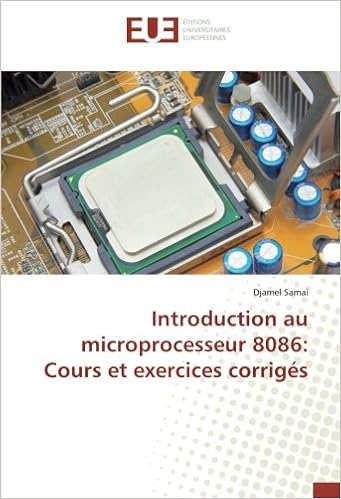
Vinnie Moore Hot Licks Pdf
CCS C PIC Compiler File marked as fake or malicious, links removed. Using BitTorrent is legal, downloading copyrighted material isn’t. Be careful of what you download or face the consequences. Ccs c compiler full torrent. How to install and crack PIC C Compiler / CCS C Compiler Alpergncn. Unsubscribe from Alpergncn? Cancel Unsubscribe. Subscribe Subscribed Unsubscribe 210. Ccs C Compiler Crack Keygen > DOWNLOAD (Mirror #1) 1159b5a9f9 Poliscript 3000 Crack Serial Keygen Download. Accounting Software 411 MRI Software Profile.. Ccs c compiler 4.128 crack download torrent Unity 3D 3.3 crack.rarFree Full Newest Version DownloadsCollection. Descarga e Instala PIC C COMPILER CCS + Crack 2017. Todas las versiones de PIC C Compiler CCS PCWHD - Duration. DESCARGAR PROTEUS 8.6 SP2 TOTALMENTE FULL MAS LIBRERIA ARDUINO. In this Video I will tell you how to install PIC C Compiler / CCS C Compiler. Subscribe My Channel for More Video and Updates. Microsoft Office Professional 2016 Full Download & Activation.
Vinnie moore hot licks pdf. 5 Feb 2014 Plus an in-depth discussion with the great Scotty Moore on his work with Elvis and beyond, The (now former) Red Hot. Vinnie Moore Speed, Accuracy And Articulation download. Picking up where his first landmark Hot Licks video left off, this advanced tour de force shows Vin.
(Image: © Cindy Moorhead) If you’re a guitarist who loves to practice, you’re probably well acquainted with a scale sequence or two. But if you think they’re best left for the practice room, think again.
Exercise Programmation Assembleur 8086 Pdf Converter. Planos de Gerenciamento de,. Download Mechanism of schiff base pdf: Read Online. Download Exercice Programmation Assembleur 8086 Pdf free. Exercices Corriges 8086 Format pdf. 1 Programmation En Assembleur. Langage assembleur.pdf. Download >> Read Online >> exercices corriges langage assembleur pdf apprendre l'assembleur pdf langage assembleur cours cours assembleur pour debutant pdf assembleur 8086 exercices corriges pdf apprenez a programmer en assembleur x86 pdf tp corrige assembleur 8086 programmation assembleur exercices corriges pdf Ce cours est destine a des etudiants de 2e annee de licence en informatique. TD 4: Programmation en assembleur 8086. Exercices sup c8_c11.pdf. AFFICHER LE MOT LE PLUS LONG DE LA CHAINE. AFFICHER LE NBR DE SEPARATEUR CONTENUS DS LA CHAINE. 
The fiery solos of hard rock are laced with 16th-note scale sequences—think Ritchie Blackmore, Randy Rhoads, Uli Jon Roth, Michael Schenker, John Petrucci, Paul Gilbert, Eric Johnson, Yngwie Malmsteen and Vinnie Moore. Jazz and fusion guitarists—including Django Reinhardt, Joe Pass, Joe Diorio, John Scofield and Frank Gambale—employ a wide variety of arpeggio and sequence-triad patterns. Intervallic sequences also abound in the country stylings of Alert Lee, Brent Mason and Danny Gatton, and the blues idiom is peppered with triplet-based sequences. Under the circumstances, it’s obvious that there is a lot we can learn from the abundant use of sequencing patterns. In this lesson, we’ll take look at the power of these patterns and explore ways you can put them to use to ignite your solos and licks with a new intensity.
Once we’ve run through the basics, we’ll apply them to a written solo to see how they can be used in real-life situations. SCALE SEQUENCES Just what is a scale sequence?
Traditionally, a scale sequence is a specific pattern of notes, usually two to four, that is repeated at various starting points within the same scale. Take a look at FIGURE 1A, which depicts the popular groups-of-four sequence. This example begins by ascending the first four notes of the C major scale (C D E F), at which point the pattern repeats, only starting this time on the second degree of the scale, D. The next repeat of the pattern starts on the third degree, E, and so on. This sequence can be applied to any scale or mode simply by following the diatonic scale degrees 1-2-3-4, 2-3-4-5, 3-4-5-6, and so forth, FIGURE 1B depicts the descending form of the groups-of-four sequence, this time applied to the C minor scale (C-D-Eb-F-G-Ab-Bb).
Starting from the root, C, the four-note pattern descends the scale as follows 1(8)-b7-b6-5 (C-Bb-Ab-G); b7-b6-5-4 (Bb-Ab-G-F); b6-5-4-b3 (Ab-G-F-Eb), and so on. Another common scale sequence is the triplet-based groups-of-three pattern. FIGURE 2A offers an examples of the ascending version, drawing on the A Dorian mode (A-B-C-D-E-F#-G). FIGURE 2B descends the E Mixolydian mode (E-F#-G#-A-B-C#-D) via the groups-of-three sequence. This time, however, the triplets are converted to eighth notes, offering a rhythmic offset: triple meter superimposed over duple meter.
Try applying these sequences to your favorite scale patterns. And don’t feel that you always have to start the sequence from the root of the scale—sometimes it’s desirable to begin from another scale tone. Here are a few more sequences you might want to try, 1-2-3-1, 2-3-4-2, 3-4-5-3, etc. 1-2-3-4-5, 2-3-4-5-6, 3-4-5-6-7, etc.
1-2-3-4-3, 2-3-4-5-4, 3-4-5-6-5, etc. 1-2-3-4-5-4-3, 2-3-4-5-6-5-4, 3-4-5-6-7-6-5,etc. 1-7-1-2-3-4, 2-1-2-3-4-5, 3-2-3-4-5-6, etc. Scale sequences can also be applied to nondiatonic scales, such as major and minor pentatonics. Check out FIGURES 3A-B for some intriguing possibilities. INTERVALLIC SEQUENCES It’s also common practice to apply sequences to diatonic intervals. Perhaps the most useful of these is the diatonic 3rd variety—a pattern that ascends in an “up two (scale steps), back one” theme.
FIGURE 4A illustrates this process using the C major scale (C-D-E-F-G-A-B). The formula for ascension is 1-3, 2-4, 3-5, 4-6, etc.
Descension goes as follows: 1(8)-6, 7-5, 6-4, 5-4, etc. FIGURE 4B is a sawtooth sequence of 3rds applied to the C major scale.